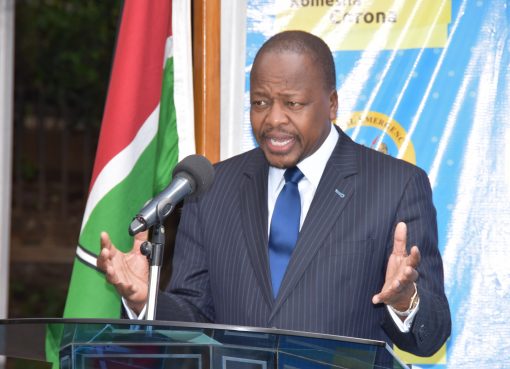The Total Fertility Rate (TFR) per woman in Kenya has steadily declined from 6.7 children in 1989 to 3.4 children in 2022.
TFR among rural women declined from 7.1 children to 3.9 over the same period while that of women in urban areas declined to 2.8 children in 2002 from 4.5 children in 1989.
According to the Demographic and Health Survey 2003 Kenya indicators report, if the fertility rate remains constant at current levels, a woman in Kenya would bear an average of 3.4 children in her lifetime.
Women aged 15-19 years have lower fertility at 73 births per 1,000 compared to those aged between 20 to 24 years which stands at 179 births per 1,000, the report says.
According to the report, this age bracket (20-24) is the fertility peak. Fertility for women aged 25-29 years is at 172 births per 1,000 and 35 births per 1,000 for women aged between 40 to 44 years.
The report also indicates that 12 per cent of women aged 15 to 19 years had ever had a live birth while 1 per cent have had a pregnancy loss.
The percentage within this age bracket that has ever been pregnant is highest in Samburu at 50 per cent, West Pokot stands at 36 per cent Nyeri and Nyandarua had the lowest at 5 per cent each.
When asked whether they wanted more children and how long they would prefer to wait before having another child, 47 per cent of women who are currently married women would want to have another child soon or later, while 17 per cent of the more than 9,000 women sampled would want to have another child soon. 30 per cent would want to wait for at least two years before getting another child.
The desire to have another child, the report indicates, decreases sharply with the number of children a woman already has. Only 16 per cent of women currently having six children or more would want another child while 33 per cent of those with three children would want to have another child.
However, 66 percent of married women with no children would want to have a child soon.
On family planning the report indicates that although there was little difference in modern contraceptive use between 1993 and 2003, the percentage has increased steadily from 32 per cent in 2003, to 39 per cent in 2008/09 to 53 per cent in 2014 and 57 per cent in 2022.
The survey indicates that 63 per cent of currently married women are using one method or another of a contraceptive, and 57 per cent use modern methods of family planning.
On the other hand, 70 per cent of sexually active unmarried women aged 15 to 49 years use a contraceptive method.
The report also indicates that use of traditional methods was more common among sexually unmarried women (11per cent) compared to women who are currently married (6per cent).
The most common modern method of contraceptive used by married women is injectables at 20 per cent, implants at 19 per cent, and contraceptive pills 8 per cent.
On the other hand, among sexually active unmarried women, male condoms are the most commonly used form of contraceptive method at 20 per cent, injectables 16 per cent and implants 11 per cent.
The report indicates that only 2 per cent of currently married women in Mandera use contraceptives while Embu recorded the highest use at 82 per cent. Contraceptive use in Wajir, Marsabit, and Garissa was at 3, 6, and 11 per cent respectively.
By Kiptanui Cherono





